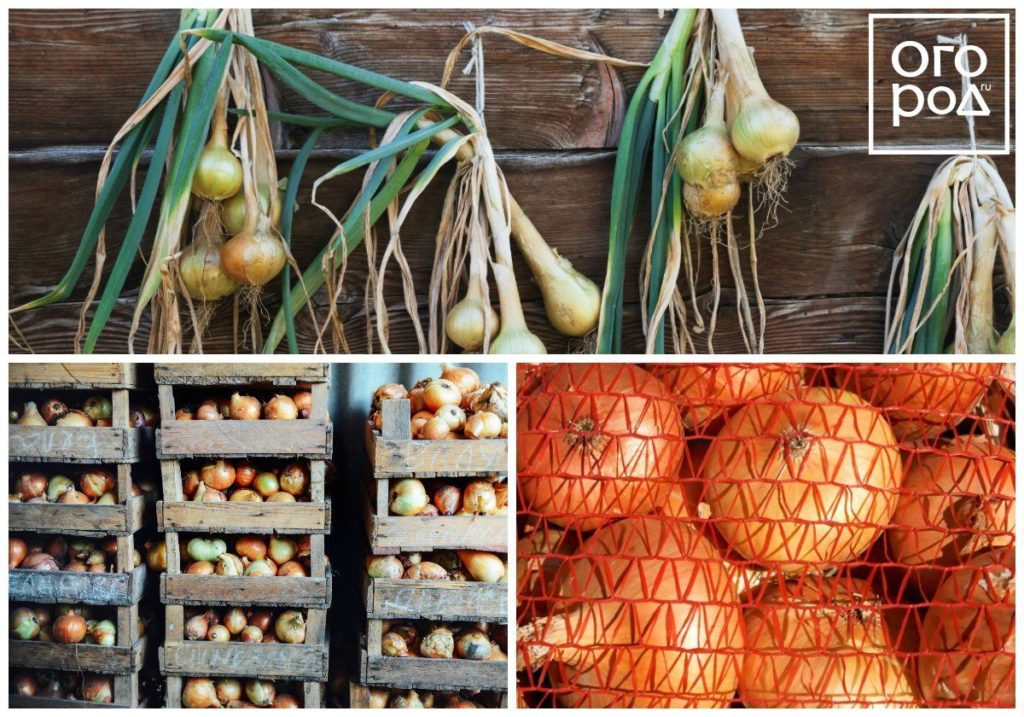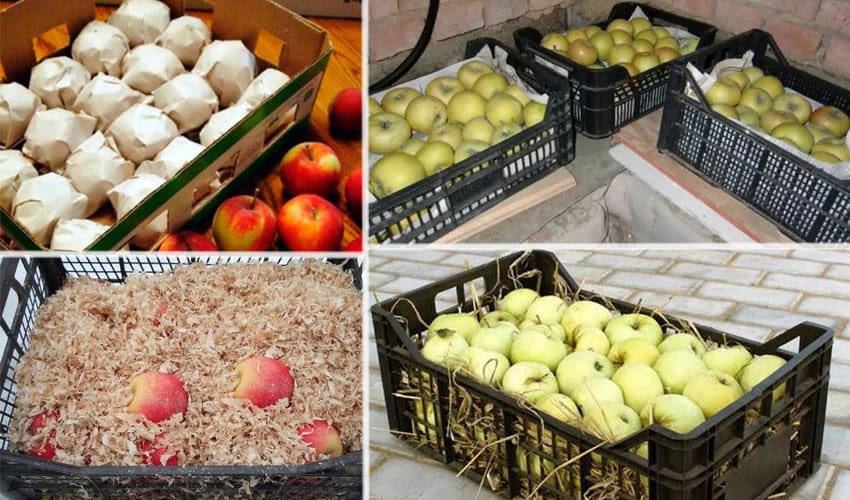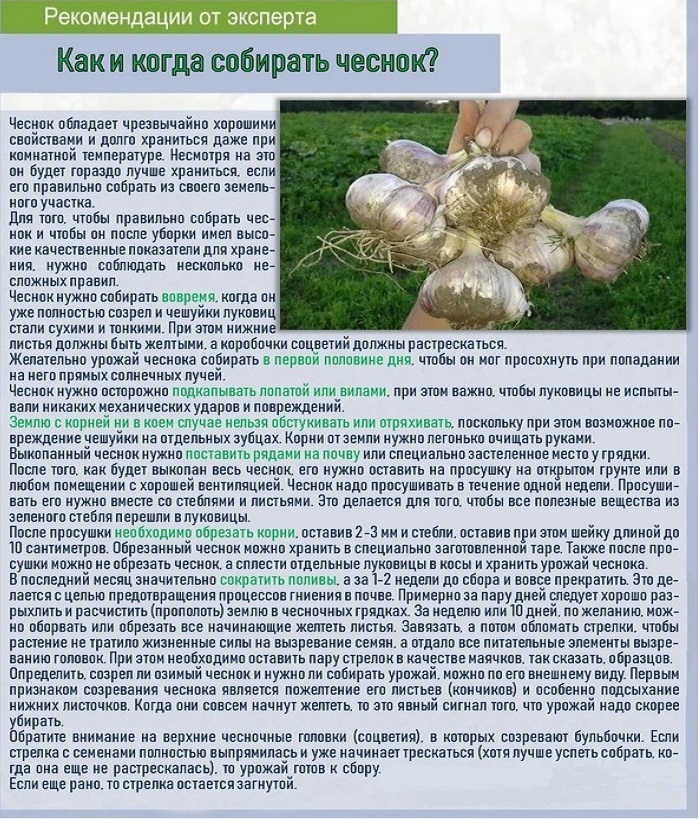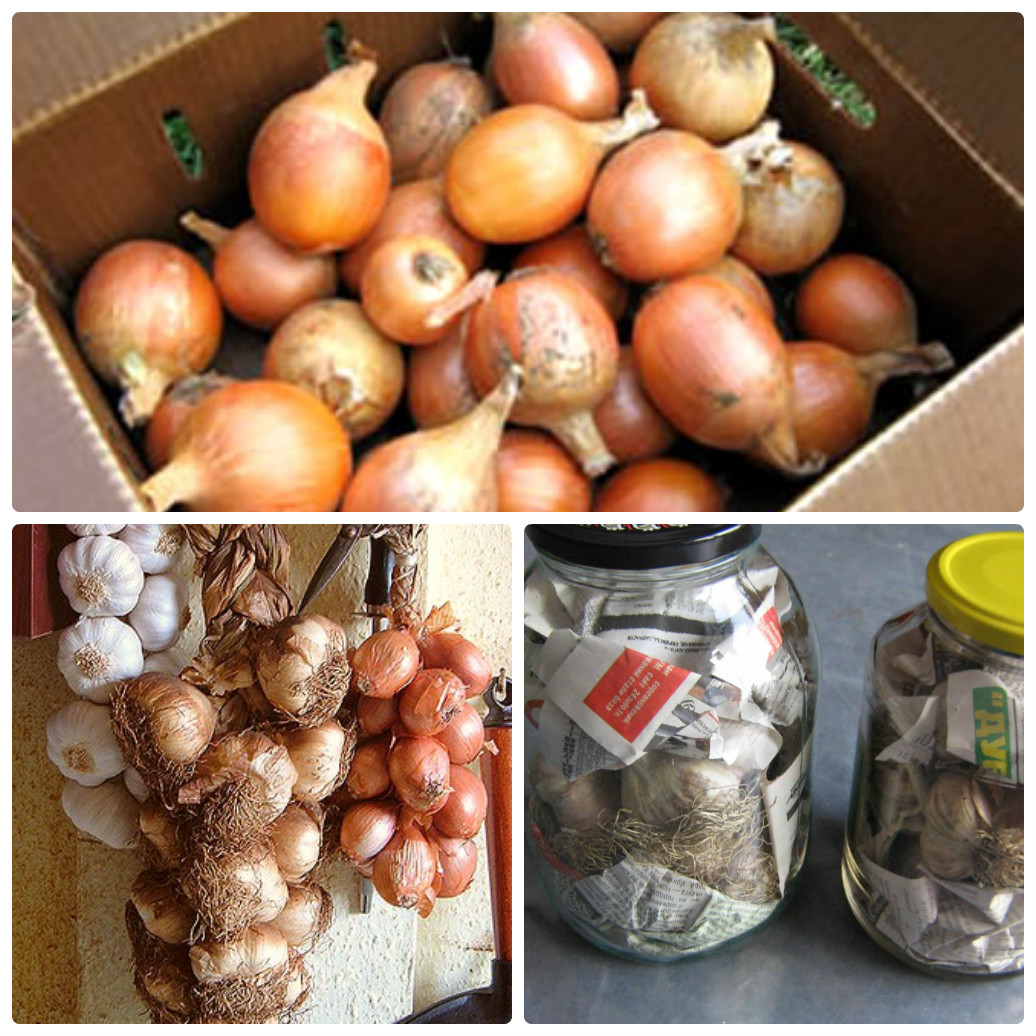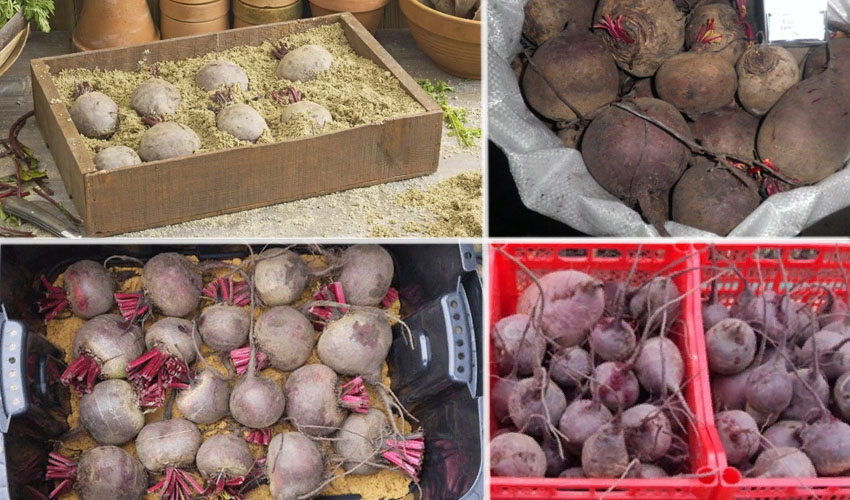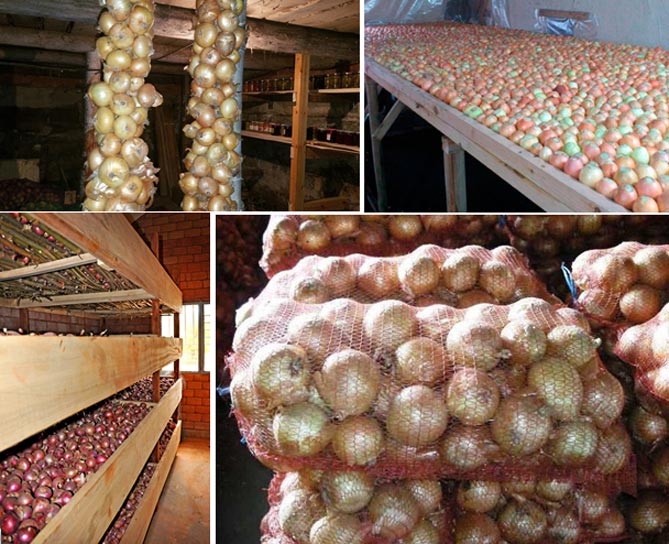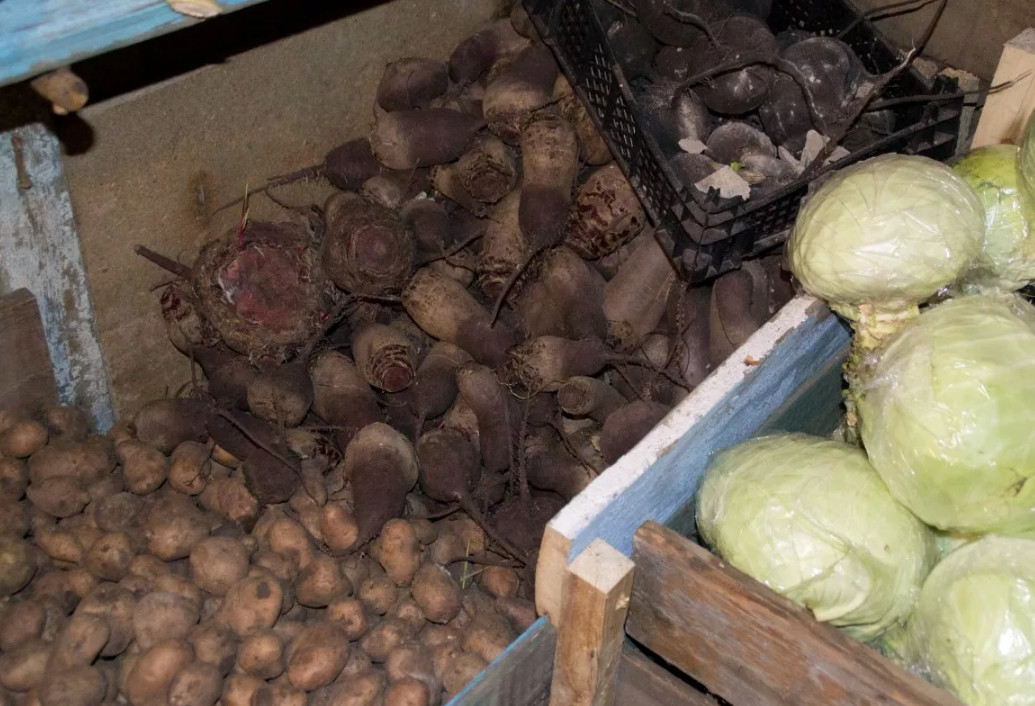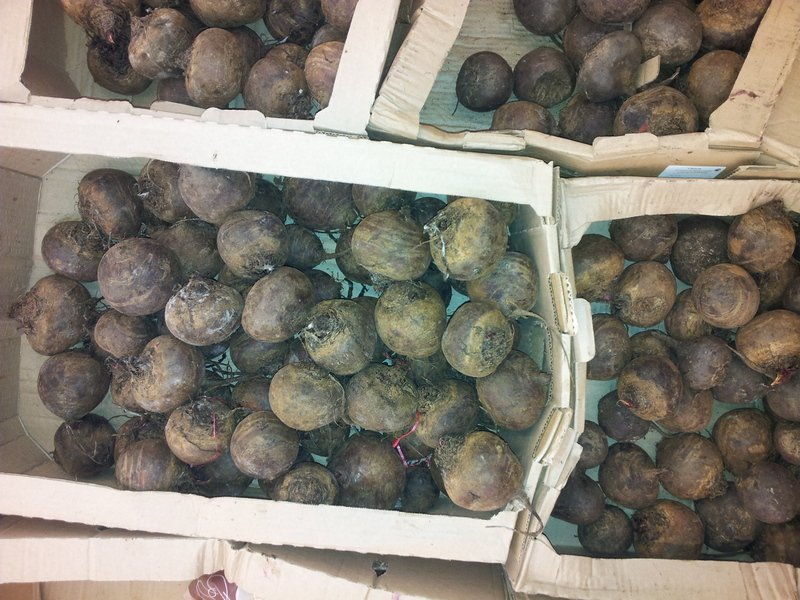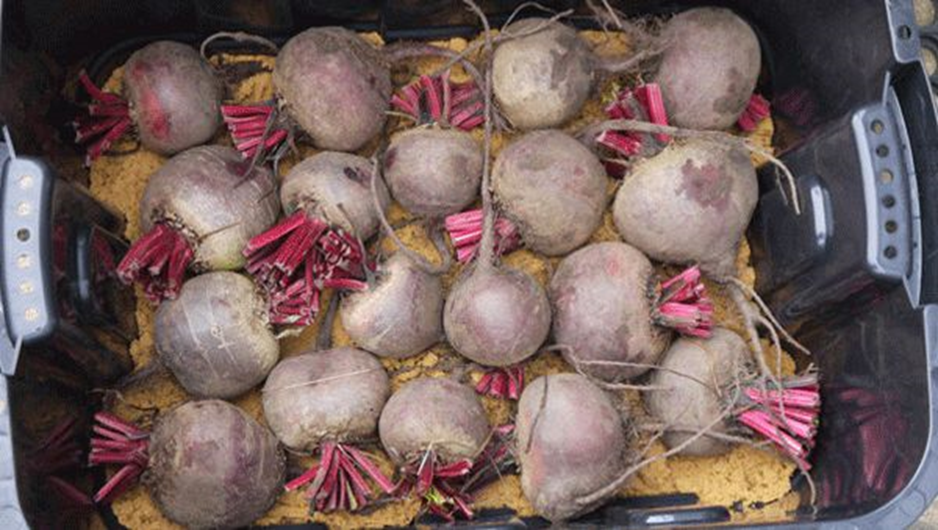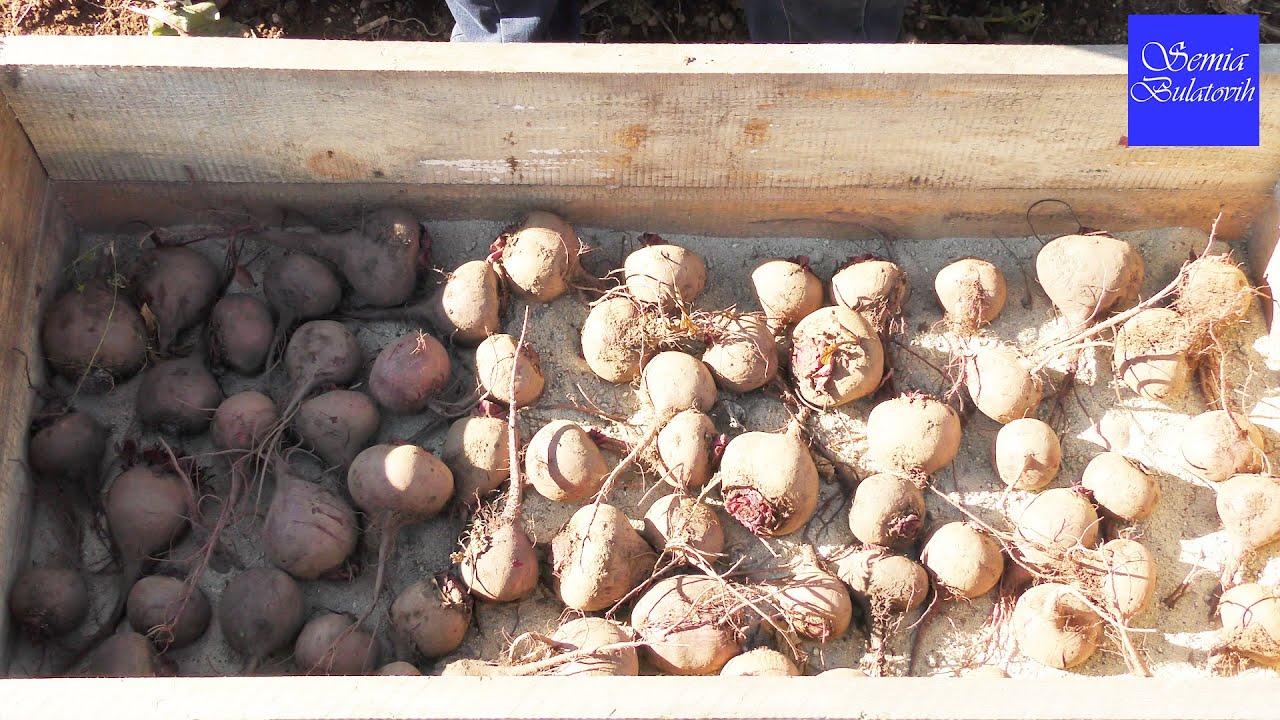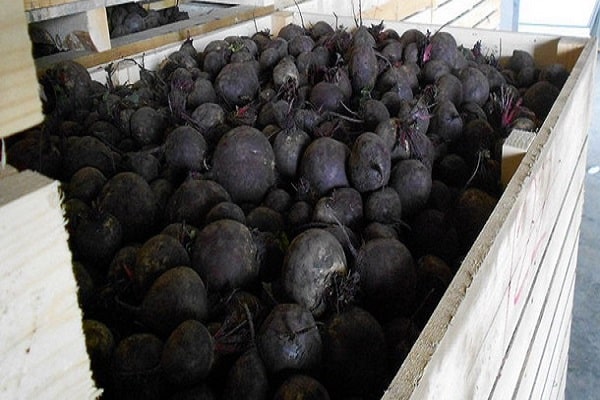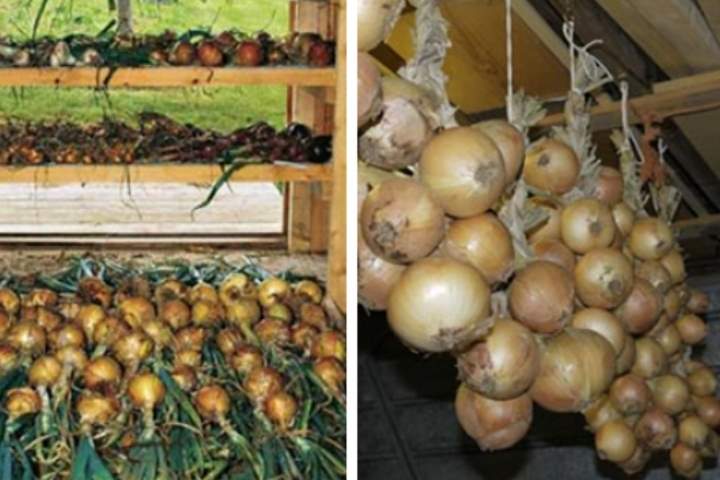Features of storage of different varieties
The prevalence of various varieties of radish has led to the fact that gardeners do not always know how to preserve one or another variety of the grown vegetable. Differences in radish storage are minimal, but they are still present. In particular, the periods for which the harvest is able to be saved differ.
So, Margelan green and black radish are stored for the longest time. Under the most favorable conditions, it lasts up to a year. At the same time, white Japanese radish (aka daikon) usually retains its edibility for no more than two months. Although, in some cases, the storage period is doubled.
Summer
Unfortunately, it will not be possible to save the black radish of summer varieties in winter for more than a month. Therefore, it makes no sense to place it in special containers in the cellar - an ordinary refrigerator is enough.

Autumn
Autumn radish varieties are stored in much the same way as winter ones. But, first of all, they are grown for consumption during the fall and in the first half of winter. Therefore, refrigeration is enough for them. Also, such a radish is perfect for preservation.
Winter
Winter varieties get their name from the season for storage and consumption in which they are intended. In winter, there are all varieties of this vegetable grown in Russia.
Regardless of the variety and variety, the principles of storing winter radish correspond to those described in the previous sections. But, it is worth considering that not all of them are stored for the same time, even under ideal conditions. So, the shelf life of a daikon rarely exceeds 5 months, while a black winter radish can lie in a cool, well-ventilated cellar for up to 9 months.

Daikon varieties for winter storage
When growing daikon for winter storage at home, it is necessary to plant varieties that are suitable for climatic conditions and soil quality. Early and mid-season varieties are considered the most popular for central Russia.
Snow White
An early ripe variety, no more than 2 months pass from germination to harvesting. Snow-white, with a light olive blunt-conical head, cylindrical fruits have a juicy, weakly sharp pulp. High-yielding variety from 1 sq. m, subject to agrotechnical rules, you can collect up to 8 kg. The plant is resistant to flowering, it can be grown in open and closed ground. Keeping quality is good; when stored in sand, the crop can lie for 5-6 months.
Important! For storage for the winter at home, the seeds are sown in mid-July, according to the 20x20 cm scheme. The daikon is cleaned from the garden for long-term storage a week before the onset of frost.

Big bull
Large bull is a mid-season daikon with large fruits, intended for winter storage at home. From germination of seeds to harvesting of fruits, it takes about 60-70 days. Oblong-cylindrical vegetables have a snow-white peel and tender, juicy flesh without voids and bitterness. The variety is high-yielding, ripe fruits can weigh 3 kg or more. The large bull is a cold-resistant variety, with proper storage it can last until spring.

The Dragon
Mid-season variety, harvesting occurs 70 days after sprouting. The plant is not tall, the leaf rosette reaches a height of up to 30 cm. A cylindrical root vegetable weighing 900 g, reaches a length of up to 50 cm. Snow-white vegetables have a juicy, tender, dense pulp. The dragon has high taste and dietary qualities. The taste is sweet, with no signs of pungency. The daikon variety is high-yielding and suitable for long-term storage at home.

Dubinushka
Mid-season type of daikon radish for winter storage at home.A variety with large fruits, each weighing from 600 g to 3 kg. Features of the variety:
- light olive leaves are slightly dissected, oblong-elongated;
- the leaf socket is half-raised;
- cylindrical fruits, pointed towards the bottom, have a length of 30-40 cm;
- snow-white pulp is juicy, sweet, with a minimum amount of mustard oil;
- long-term storage;
- weight reaches from 600 g to 2.5 kg.
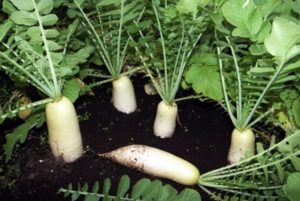
Elephant fang
Medium early variety, from germination to harvest - 70-80 days. Snow-white fruits of a cylindrical shape, up to 60 cm long and weighing 300-500 g. The elephant's tusk is cold-resistant, high-yielding, well transported, subject to long-term storage at home. From 1 sq. m yield is about 5 kg. The snow-white pulp is juicy, sweet, contains vitamins, mineral salts, pectin, macro- and microelements. For long-term storage of daikon, seeds are sown in mid-June according to the 15x40 cm scheme.

Which place to pick?

You need to store the radish at home, choosing the best place for it. If you store a vegetable in the refrigerator, then in small quantities and medium-sized specimens. Large volumes simply will not fit. For refrigeration, root crops are packed in plastic bags that can lie in a special lower compartment for a month or two. The radish is periodically inspected for spots, dents or plaque. The spoiled radish is removed.
If you have a manor in the village or outside the city, you can store the radish for the winter in a pit. Its depth should reach 60 or 70 cm. The hole digs 100 cm wide. Straw spreads at the bottom. The radish is stacked on top. To pour vegetables, use sand. A small earthen layer is poured on top. In frosts, the pit is covered with snow. Ventilation is not required for this storage method. Root crops from the hole can be taken out in the spring.
Basement storage of root crops in the winter is also beneficial. Prepare wooden containers in the form of boxes and barrels. Wet sand is used to pour the radish. Leave the produce in the basement in a cool place. The optimal temperature regime will be from 0 to "plus" 2 degrees. The space must be ventilated. The room is dry. Humidity should not exceed 90 percent. You can sprinkle the earthen floor with clean, dry sand.
Cellar storage in the winter allows you to use the radish even after six months of laying. The cellar will be the perfect place to store black root vegetables.

Before storing the radish in the cellar in winter, prepare a box or barrel. It is better that the container has holes for ventilation. Garden products are placed in a container in layers. Slightly wet sand is poured on top with a four-centimeter layer. Choose a cool corner in which the container is left. You can put root crops on racks or in high thirty-centimeter piles. The products should be sprinkled with sand, which should be periodically moistened. The radish, which has been stored for some time with spoiled products, is sprinkled with crushed chalk powder.
The cellar should not smell of dampness. The room must be regularly ventilated and dried. The temperature should not be higher than 2 positive degrees
It is important to check that there are no rodents in the burial area. It is better to disinfect the room so that all fungi and parasites are destroyed and do not damage the vegetables.
Instead of wooden containers, it is permissible to store bitter vegetables in plastic bags for the winter. The culture in them develops, being in an upright position. Sandy products in bags will stand on the shelves. The package is not closed. Taking out a few redchins from the cellar, the unused ones are immediately put into the refrigerator.
Radish with honey
Black radish with honey is a proven folk remedy for the treatment of sore throats, bronchitis and cough.Its juice has a bactericidal effect, stimulates tissue regeneration processes, and has a positive effect on the functions of the digestive system.
There are three ways to prepare a medicine:
- Cut a cavity in the root vegetable, put a spoonful of honey there and leave for 1 day.
- Peel the radish, grate, squeeze the juice and mix it with honey (2 tbsp. L.).
- Cut the peeled vegetable into cubes, put in a container and pour over the honey.
Keep the ready-made mixture of juice and honey in the refrigerator for no more than 72 hours.
It is undesirable to store black radish in reserve in the freezer. When thawed, it becomes lethargic and watery, loses its color and its medicinal properties.
Timely harvesting and creating optimal conditions is all that is needed to successfully store your radish. The recommendations given in the article will help you preserve the harvest and provide yourself with a healthy vegetable in the cold season.
How to ensure the safety of the radish?

There are different ways to store black radish. Sometimes blanks are made from it for the winter. The root vegetable can be stored fermented. Rare salads are being prepared. Many people know how to prepare radish juice.
In addition to the black root vegetable, green radish can be grown, this is a Chinese variety. Delicious white Japanese "Daikon". Overseas varieties taste like radishes, they are juicy and not as pungent as the black variety. They also use European species, which include "Winter round black", "Maiskaya", "Winter round white" and other varieties.
Summer radish will stay in storage for no more than 20 or 30 days. Winter and autumn varieties will last up to 9 months. In urban settings, in order to preserve the green and other types of radish, you can use the glazed balcony. To do this, the radish is put into bags or polyethylene bags if there are holes in them or in boxes and strong cardboard boxes. To prevent the product from freezing, the temperature should not be below zero. When frozen, vegetables are transferred to another place or wrapped in warm clothes.
Often, radish is used as a medicine for colds, bronchitis. The grated vegetable is mixed with honey and infused for a day. Radish juice is good for coughing. The grated root vegetable can be stored in the freezer by packaging in plastic bags. The product can last up to ten months. A whole radish is never stored in the freezer.
In order for the radish to retain all its properties, it is possible to preserve it. To do this, you need to use sterilized half-liter jars. The products are washed out. Peel the peel from the vegetables. Rub the raw materials with a coarse grater. A garlic clove is laid down the container, nine percent vinegar is added in the amount of a tablespoon. Fill the jar with grated products. Sprinkle everything with grated carrots and chopped herbs. Sugar and salt are poured (just a teaspoon each). Add boiling water to keep the jar full. Close the glass container with a lid.
There should be a saucepan on the fire, in which water boils moderately. The blank should be put there. Roll up the jar. So that the products are evenly distributed in it, the container is rolled a little on the table. Put away in a cellar or refrigerator.
4 Permitted errors and their consequences
Many novice gardeners believe that harvesting root crops is a simple procedure that does not require special skills: it would seem that he pulled it out of the soil with one hand, and cut off the tops with the other. But since a lot of effort and money was spent on growing and harvesting, this event should be taken seriously. And all the same, summer residents make a lot of mistakes.
- 1. Dense sowing of radish seeds, which results in the development of small, coarse and non-succulent fruits.
- 2. Rare watering. Vegetables coarse, crack, acquire an unpleasant odor and bitter taste.
- 3. Feeding with organic matter. Natural ingredients are contraindicated for culture, from this, the roots become ugly, lose their taste, and quickly deteriorate.
- 4.Early collection of unripe root crops. They wither quickly or begin to sprout.
- 5. Delay in cleaning. Overripe vegetables become unsuitable for food, since the pulp acquires a loose structure, loses its juiciness, and voids appear inside.
Errors in the organization of radish storage are considered an equally common mistake. To increase keeping quality, it should be sprinkled with sand or placed in a wooden container (plastic bags). Do not store root crops with the following defects:
- slightly frozen;
- damaged;
- withered;
- affected by rot, worms;
- too large or, conversely, small.
Such vegetables should be discarded during the harvesting phase. Some can be sent for recycling, while others should be disposed of.
Features of radish storage
Juicy, crispy radishes can be stored for a long time if certain conditions are met - in the refrigerator, cellar and freezer. The radishes are stored dry, wet and frozen. Before storage, the fruits are cleaned from the ground. Healthy, undamaged vegetables are placed in storage.
Dry method

How to store radishes dry? Vegetables store well in a bag in the refrigerator. To do this, the greens are removed from the root crops, leaving 2-3 cm. The roots are left. The radishes are washed with running water, blotted with a towel and placed in a plastic bag. It is not recommended to tie the bag to ensure air access. Small holes are made in several places so that the roots do not suffocate. This method keeps the radishes crisp and juicy for 10-14 days.
You can store vegetables in a plastic container or saucepan. To do this, remove the tops from root crops and place them in prepared containers in layers, sprinkling each layer with wet clean sand or sawdust. A container with radishes is placed in the vegetable storage compartment in the refrigerator. This method allows radishes to be stored for up to four months. Dungan and Red Giant varieties can be stored until spring.
Let us now tell you how radish is stored with tops. The radishes are tied in a bunch, cleaned from the ground, without washing, then placed in a bag. To prevent the roots from wilting, the tops are periodically moistened. Such radishes are stored for 7-9 days on the vegetable shelf of the refrigerator.
Radishes are well stored in the cellar, where there is always high humidity and low air temperature. In the cellar, the roots do not spoil until the end of winter.
Vegetables are placed in layers in a wooden or plastic box. The collected radish is not washed, only cleaned from the ground, the tops are removed, leaving 2-3 cm of greenery. Slightly moistened sand or sawdust is poured at the bottom of the container, radishes are laid out on top. Then the radish is completely covered with a layer of sand or sawdust. So the layers are alternated to the top of the box.
During storage, make sure that the sand layer does not dry out, it must be periodically moistened.
Wet storage

Wet storage of the harvested crop is provided in several ways:
Pour some cold water into a bowl and place the radishes so that the roots are in the water. The bowl is placed in the refrigerator, the tops are periodically moistened. In a bowl, radishes will stay fresh for 7-9 days. With this storage method, you can remove the tops, leaving small tails.
It is important that the roots remain in the water.
A little water is poured into the bottom of the can. The radishes are washed, the tops are cut
Vegetables are placed in a jar and covered with a lid. In this case, moisture will not evaporate, and the fruits will remain elastic. This method allows you to store radishes for up to a week.
Washed vegetables with cut tops are placed in a jar and filled completely with water. A jar of vegetables is stored in the refrigerator. The water is changed every 3 days. This method allows you to store radishes for 30-40 days.
The radishes are washed and the tops are trimmed. Wet vegetables are put in a plastic bag and tied. The radish bag is placed in the vegetable compartment of the refrigerator. Through a transparent bag, make sure that the vegetables do not spoil.The radish in the package is stored for 7-10 days.
How to properly store radish for the winter
There are various ways to store your radish at home. Each of them has its own characteristics that must be considered before choosing.
Cellar storage
Any variety of this vegetable thrives best in a basement or cellar. In such rooms, the temperature is no higher than +3 ° C with a humidity of 85%. Before placing the roots for winter storage, they are carefully prepared. The room itself should not be infected with parasites and fungi. If insects live in it, they get rid of them.
Boxes with holes filled with radish are transferred to the basement. Sprinkle each layer with slightly damp sand. In the same way, the radish can be stored on the shelves. To maintain comfortable conditions, the sand is periodically moistened, and rotten and spoiled specimens are disposed of. If you do not do this, healthy vegetables that were nearby may deteriorate.
Wooden barrels are also suitable for storing radishes. In addition to containers, neighbors are chosen - vegetables and fruits, which will not have a negative effect on storage. Carrots and potatoes are the best company. It is undesirable to place apples or pears nearby, as they can accelerate the germination of the radish. In addition, vegetables from such a neighborhood begin to absorb foreign odors.
In the apartment in the refrigerator and freezer
How to store crops if the house is not equipped with a cellar and basement? There is only one answer - a refrigerator. To do this, all vegetables are put in polyethylene bags with holes made so that they can breathe freely. The containers are placed on the lower shelves.
If the refrigerator has special drawers for vegetables, you do not need to put the radish in bags. In this case, it must be borne in mind that vegetables cannot be stored in this form for a long time. It is recommended to eat the root vegetables as soon as possible. This option is suitable if the vegetable should be on hand in the near future.
Experienced gardeners advise against using a freezer for this purpose. Freezing will make the vegetable tasteless and soft. It can be frozen only in one case - the treatment of colds. Grated root vegetables are packed in sachets and stored in the freezer. If necessary, take out only one and use it immediately.
It is best to store vegetables on a shelf in the refrigerator rather than freezing them. In doing so, they are checked for rot or mold. Over time, they become soft and unsuitable for human consumption. Such instances should be disposed of.
On the balcony
If a person does not have a country house, storage conditions can be arranged on the balcony. They will feel best in wooden boxes sprinkled with sand on top. If the frosts are very strong, the containers filled with vegetables are covered with cotton blankets. This option is suitable for margelan, black and green radishes.
The balcony or loggia for storage must be glazed
This is important, as the optimal temperature is a key feature in this matter. Glass prevents precipitation from settling, because moisture contributes to the development of rot and mold
The temperature on the balcony should never be below 0 ° C.
Conservation
In addition to storing fresh vegetables, you can roll them up in jars and thus get a completely different taste. Preserving crops for the winter is a great idea. There are tons of recipes for creating blanks. Most Popular:
- Pickling. Vegetables are peeled and washed thoroughly, then cut into small pieces and sprinkled with salt. Remove excess moisture by placing everything in a colander and rinse again. Distribute the required amount in the jars, pre-sterilizing them. Prepare a marinade based on water, vinegar, salt and sugar. Remove the boiled liquid from heat and let cool. Then pour into jars and close with plastic lids.
- Pickled vegetables. Peeled root vegetables are chopped with a fine grater and garlic and salt are added to taste.The mass is poured into banks, ramming it tightly. Store in a cool and dark place. The product is ready for use in 2 weeks, by which time the radish is completely fermented.
- Vegetable salads. The radish, along with other vegetables, is chopped and closed in jars. Other ingredients include dill, parsley, celery, carrots, cabbage and garlic. Assorted vegetables are also tightly packed in jars, adding vinegar, salt and sugar. Containers with vegetables are sterilized in water under covered lids.
Regardless of the chosen option for preparing the radish, the jars are stored in a dark and cool place.
Storage for the winter at home
Choosing between different ways of storing radish harvested for the winter, many opt for home conditions. This is due to the fact that this is the most economical way. It does not require searching or renting special premises. Moreover, the costs of the latter option would have paid off only if the commercial sale of the harvested crop was planned.
Cellar storage
For winter storage of the harvested vegetable, the most optimal conditions will help create a cellar or basement. This is one of the main reasons for the particular popularity of this particular method.

In order for the harvest to last longer, it is important that certain safety standards are observed in the cellar:
- there should be no mice or other rodents;
- groundwater should not be too close;
- there should be no mold on the walls.
The absence of rodents is a very important parameter. If they do exist, then within the framework of measures to prepare a room for storing radishes, they must be disposed of. Otherwise, they will eat up the entire crop.
The presence of fungi and mold on the walls, in turn, indicates an excessively high humidity in the cellar. This leads to the development of rot in root crops. To prevent such an outcome, the room is dried with heaters and well ventilated. The walls are treated with antifungal mixtures.
The very technology of storing vegetables in the basement is quite simple. Peeled from tops and earth, dried root crops are placed in wooden barrels or boxes, alternately with sand. First, they put the fruits on the bottom, then cover them with completely dry sand, and on top - the next layer of vegetables, and so on until the container is filled.
Another option for storage in a cellar or basement involves the construction of special bins from wooden planks. Their sides should be up to a meter high. Ventilation holes are required.

In the apartment - in the refrigerator or freezer
One of the best ways to preserve a radish crop for city dwellers is to freeze it in the freezer or store it on a refrigerator shelf.
It is believed that freezing is not suitable for all types and varieties of radish. Many of them, as a result of such a procedure, lose some of their taste. The fruit becomes too soft. It is worth freezing either the hardest varieties, or the radish that they plan to use for therapeutic and prophylactic purposes. In the second case, the root vegetable is grated and placed in a container for storage. Thus, it remains usable for at least a year.
Storing root vegetables in the refrigerator itself, at temperatures no higher than 4 degrees, is suitable for almost all varieties of this vegetable. Although some of them, in this case, remain useful for no more than one and a half months from the date of harvest. Daikon is one of these short-lived types of vegetables.
To preserve the harvest in this way, several root crops are placed in plastic bags, which are tightly closed and very small holes are made in them for ventilation. You just need to put such a package on one of the shelves of the refrigerator. The condition of the vegetable is regularly checked and, at the slightest sign of spoilage, thrown away.
On the balcony
Storage on the balcony is another good way to preserve radish in an apartment.True, for this it is necessary that:
- the balcony was glazed;
- the temperature on it did not drop below zero in winter.
Most modern urban dwellers are able to provide such conditions. The glazing of the balcony is important not only because it is better able to keep the temperature, but also because then precipitation does not fall on the root crops.
On the balcony, the radish is stored in boxes, as in the cellar. That is, root crops are interspersed with dry sand, layers. If it is too cold outside, and the danger of lowering the temperature on the balcony to critical values becomes real, the boxes are covered with blankets.

When to store black radish?
It is difficult to name the exact date when humanity began to eat radish. It is known that even the builders of the Egyptian pyramids ate it regularly - the product gave strength and did not allow the development of various diseases. In the modern world, the most popular types of radish are:
- Black - winter, summer
- Green (forehead, margelan)
- White (Japanese, or daikon)
Despite the more pleasant and delicate taste that white and green radish have, black radish is still the most popular. Its storage is possible for a very long time, because the vegetable lies perfectly all winter and pleases with its supply of vitamins and minerals. But it turns out that the specifics of storage and keeping quality directly depend on the type of radish and when it was harvested.
Summer radish - collection and storage
The very first of the year on our tables appears summer radish, or rather, those varieties that were planted in early spring. They can emerge and develop normally only in plastic greenhouses and greenhouses. Such vegetables are harvested from the end of May. After collecting from them, you need to carefully shake off the ground. Long roots, tops should be cut - otherwise the vegetables will dry out quickly.
Even if the harvest of summer radish is large, it will not be possible to preserve it for a long time. Despite strict adherence to the deadlines for when to remove black radish, it can only be stored in the refrigerator, and even then - no more than a month. Some varieties of summer black radish are generally stored for no more than a week, and all because they are intended for direct consumption. Do you want to leave the product in the winter to fortify the body? Then it is worth growing its other varieties.
Winter radish - when to harvest?
All the ways how to store black radish in winter are described specifically for its winter varieties. Only late harvest is one of the "guarantors" of the safety of the vegetable for a long time. The later the period when to remove the black radish for storage, the better the root crop will ripen, the more minerals, vitamins, essential oils and other substances will be present in it.

The ideal harvesting option is before the first frost and in dry weather.
It is extremely important that the roots do not freeze or overripe. Frost greatly reduces keeping quality - even correctly taken measures will not save root crops from rapid rotting, especially if it has been subjected to several frosts
Overripe radish negates its nutritional qualities - the vegetable becomes tough, rough, it contains a lot of unappetizing fibers.
Usually, in the middle lane, a winter root crop is harvested in late October - early November. Single frosts will not affect the quality too much - the main thing is to have time with harvesting before persistent frosts. The subtleties of preparing root crops for storage will be discussed below.
How to store black radish in winter so that it does not wither and spoil

Black radish is a root vegetable recommended for winter storage. Due to its high content of nutrients, its regular use helps to strengthen the immune system, and during the period of colds infections, it can help to overcome the disease
It is important to follow the recommendations on how to store black radish for the winter at home so that it retains its benefits and taste.
Harvest as it ripens; if it is overripe, the taste will become bitter. It is better to do this before the onset of frost, in calm weather without precipitation. Otherwise, vegetables will quickly mold and rot. The optimal period for harvesting in central Russia is late October - early November. Harvest according to the following scheme:
- Undermine the root crop with a pitchfork.
- Gently pull the vegetable out by the tops.
- Cut the leaves 1 to 2 cm from the radish.
- Do the same with the entire crop.
Black radish tends to quickly mold, so it is important to immediately dry it, put it on a pallet, at a distance from each other. Store it in a cool place for several days, preferably under a canopy to avoid direct sunlight.
After drying, sort through all vegetables, leaving only whole vegetables without signs of damage.
Early-ripening varieties of black radish are not suitable for winter storage. For a long time in winter, you can store mid-season and late-ripening varieties: "Winter round black", "Skvirskaya black", "Gaivoronskaya" and "Chinese".
How to store a radish in the cellar in winter?
Owners of cellars should not worry too much about the safety of the root crop. The vegetable is quite mature, it is stored no worse than potatoes, beets and carrots, that is, with the right approach, it can remain fresh and tasty until spring.
Preparing the root crop for storage
Black and Margelan radish are prepared for placement in the cellar in the same way. Immediately after harvesting, the roots are slightly dried, after which they shake off the earth from them, but do not wash. Leaves and petioles are cut to a length of 3 cm, small lateral roots are also cut off.
Further, before storing green and black radishes at home, they are sorted. Overgrown, ugly, too small specimens are discarded. The lower tails should not be cut off from root crops: if you leave them, the radish will stay fresh and juicy longer. Immediately before storage, the radish should be more or less clean and completely dry.

Rules for storing vegetables in the cellar
The air temperature, the most favorable for the long-term preservation of the root crop, is 0-3 degrees Celsius, humidity is up to 85%. In general, it takes 2 weeks to prepare a cellar for placing vegetables in it, so that the microclimate in it is optimal. The actions should be as follows:
- Ventilate and dry the room.
- Disinfect with bleach solution.
- Fill up cracks, holes to prevent frost from freezing vegetables, and also prevent rodents from entering the cellar.
- Clean the ventilation system, close the hole itself with a mesh with fine meshes.
- Sprinkle the floor with a layer of sand 3-5 cm high.
- With dry air in the cellar, put buckets of water in it.
If all the measures, how and when to remove the radish from the garden for storage, are observed, it will remain tasty for a long time, which cannot be said about some of its "neighbors". It turns out that apples cannot be placed next to the radish in the cellar. They absorb odors and become tasteless. Fungi can be transmitted from apples to radishes, which will reduce the keeping quality of the root crop. Also, do not store radishes next to pears - for the same reasons. But radish will not harm all other root crops - neither black nor green.
It is necessary to lay out the radish in the cellar on shelves or in chests. Chests are meant to be special wooden boxes with ventilation holes. You can put vegetables in stacks up to 35 cm high, sprinkling layers with sand. To prevent the radish from drying out, the sand is occasionally moistened with water from a spray bottle. Do not pour too much water over vegetables - they can sprout.


